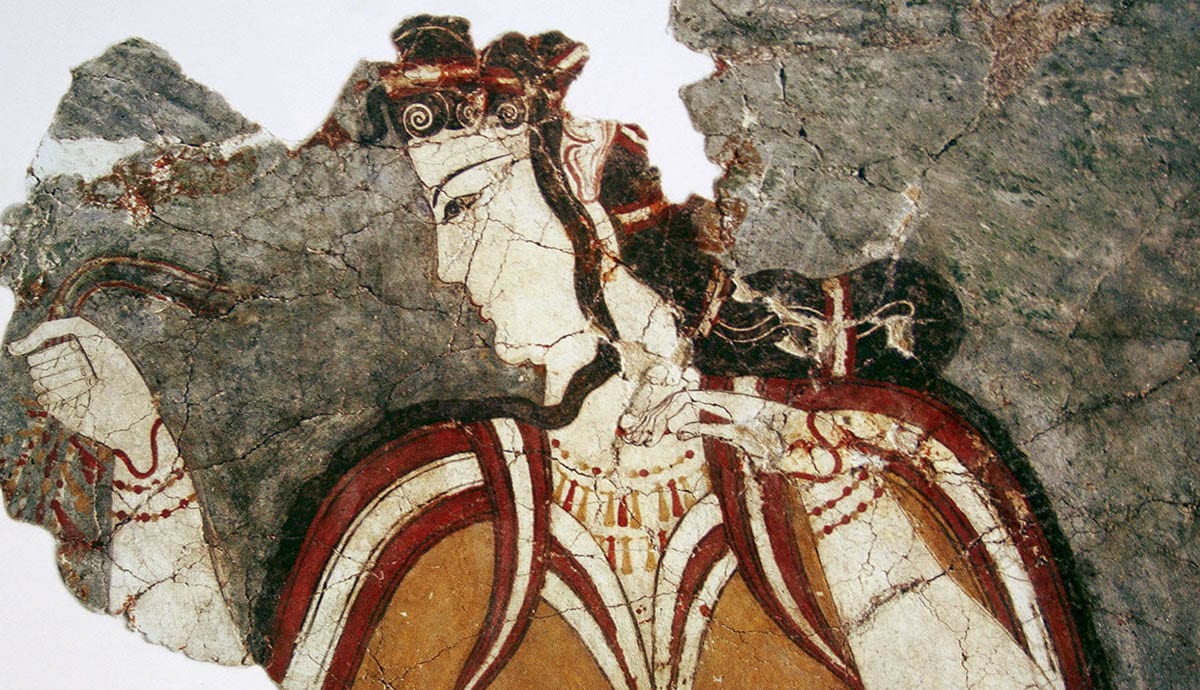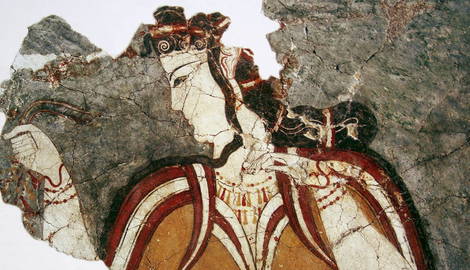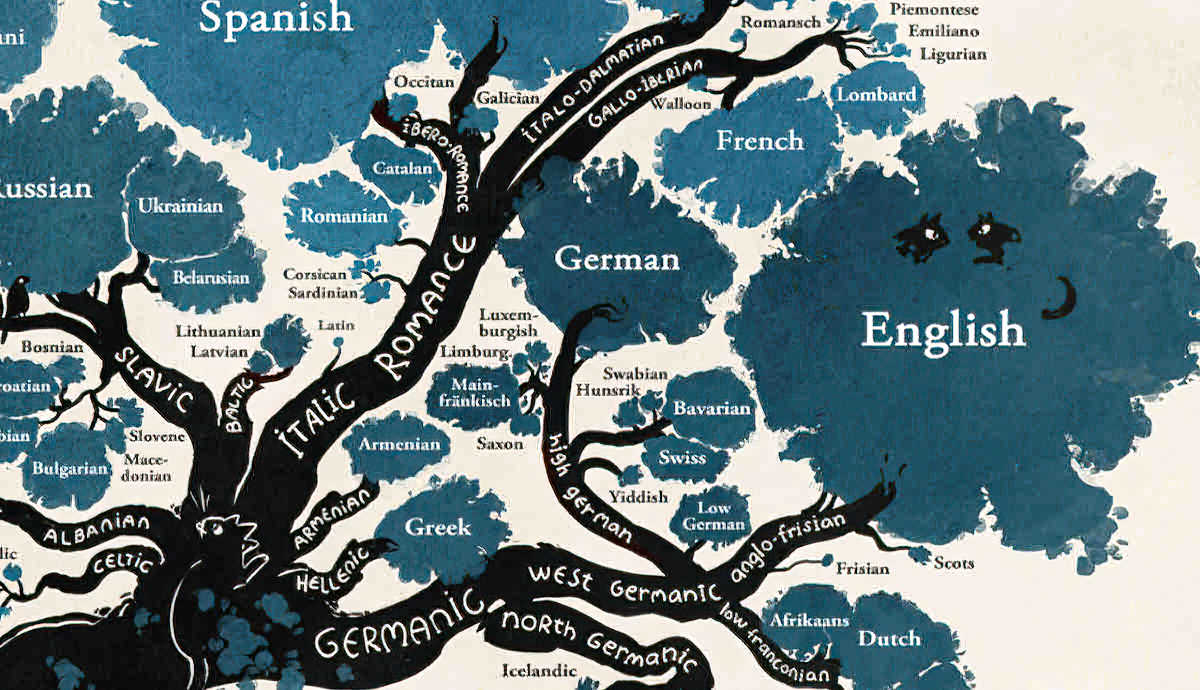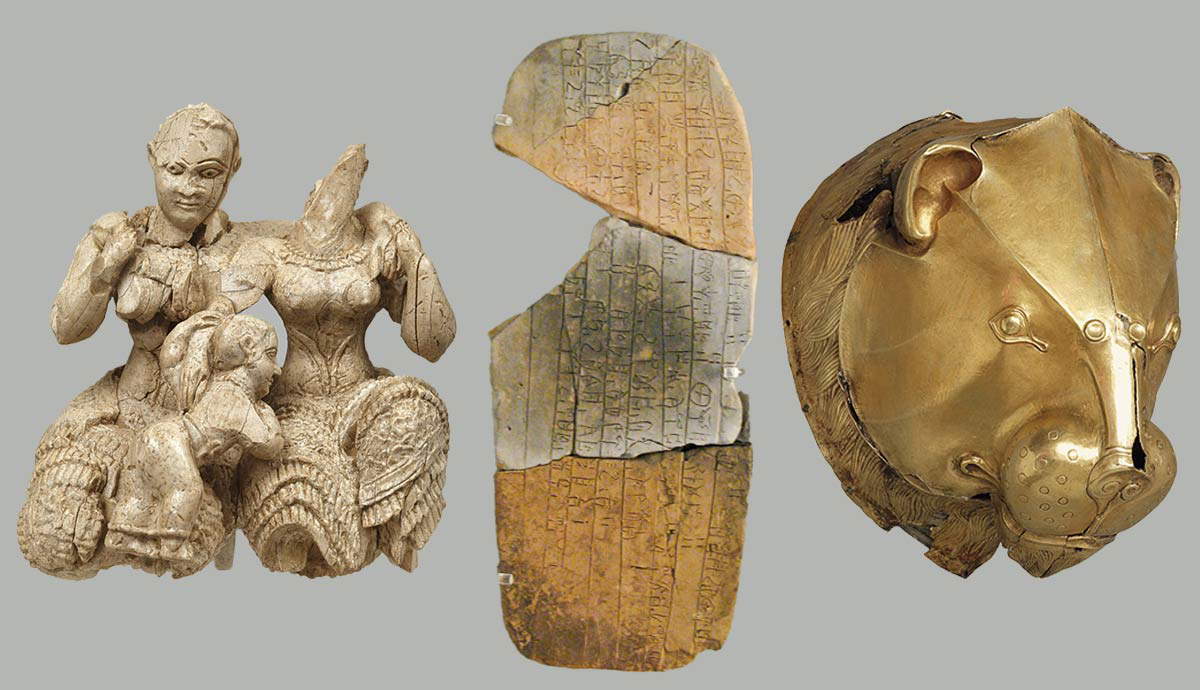
The fortified city of Mycenae in the Peloponnesus peninsula gave its name to the period from 1600 BC to 1100 BC, known as the Mycenaean civilization. Art and culture flourished within the feudal city-states of the Mycenaean world due to an abundance of wealth accumulated from trading and successful military expeditions. Homer, the legendary epic poet, extolled the prowess of its King Agamemnon, who led the Greeks in the Trojan War.
Sing to me of the man, Muse, the man of twists and turns,
driven time and again off course, once he had plundered
the hallowed heights of Troy. Odyssey, Homer
The Mycenaean Civilization: Bronze Age Greece

It is an era of great might and splendor, fierce warriors and great kings inspired Homer to write his epic poems Iliad and Odyssey. Iliad describes in great poetic narrative the feats of the Trojan War, the siege and conquest of the great city of Troy by the assembled Greek Armies. In Odyssey, the poet gives a lyrical account of the adventurous return of Odysseus to his homeland Ithaca after the war.
Epic poetry, as introduced by Homer is the first sample of mature European literary work and an inspirational masterpiece for many artists and philologers in the centuries that followed.

The Muses in mythical Greece were nine, daughters of the God Zeus and the Titaness Mnemosyne, the goddess of memory. They were eternally young maidens that influenced, protected and inspired the Arts. Each was the mentor and inspirer of an art form as follows:
- Calliope, the Muse of epic poetry
- Clio, the Muse of history
- Erato, the Muse of lyric poetry
- Euterpe, the Muse of music
- Melpomene, the Muse of tragedy
- Polyhymnia, the Muse of sacred poetry
- Terpsichore, the Muse of dance and chorus
- Thalia, the Muse of comedy and idyllic poetry
- Urania, the Muse of astronomy
“It was Homer who formed the character of the Greek nation. No poet has ever exercised a similar influence over his countrymen. Prophets, lawgivers, and sages have formed the character of other nations; it was reserved to a poet to form that of the Greeks.”
Arnold H. L. Heeren, History of Antiquity
The Palaces – Built By Giants To Shelter Heroes
During the Mycenaean period, the Greek mainland enjoyed an era of prosperity centered in such strongholds as the city-states of Mycenae, Tiryns, Thebes, and Athens.
The most renowned site representative of the period is in Mycenae. Heinrich Schliemann’s excavations in the mid-1870s first brought to light an abundance of objects whose opulence and antiquity seemed to correspond to Homer’s description of Agamemnon’s palace. Subsequent excavations have further revealed the grandeur of the city and its expanse.

The Palace of Mycenae situated on the top of a hill, overlooks from an advantage point the Argive plain and its surrounding area. Neolithic settlers first inhabited it in the third millennium. The heyday of the Mycenaean civilization came in 1400–1200 BC and the most representative structure of its acme is the huge limestone fortification walls, usually referred to as the “Cyclopean Walls”. The legend goes that the mythical giants, the Cyclopes built the walls, due to their formidable size.

The main entrance of the Palace of Mycenae features the most distinctive surviving feature of the Mycenaean grandeur: the Lion Gate, built around 1260 BC.
The Lion Gate guards and provides the main access to the fortress. The two lions positioned symmetrically around a column is the first example of emblematic and representational monumental sculpture in Europe. The Lions clearly symbolize the power of the Mycenaean State and the unconquerable features of its architecture.
The triangular shape of the sculpture supports the arch of the gate, as it distributes the weight above the door to the sides and away from the horizontal beam.

The Palace of Tiryns, located on the fertile Argolis plain, Tiryns lies between Nafplion and Argos in the eastern Peloponnese in Greece. The site has been inhabited since the Neolithic Age (7th-4th millennium B.C.) but reached its greatest period of importance in the 13th century B.C. as a major center of the Mycenaean culture and aided by its position, at that time just 1 km from the coast, it was an important Mediterranean Bronze Age port. Tiryns, along with nearby Mycenae is on the list of UNESCO as a World Heritage Site. The Cyclopean fortification that surrounds the palace is clearly equivalent to the one in Mycenae.

The Palace of Tiryns in Argolis, near Mycenae, depicting the massive walls
The Palace of Thebes, known as Kadmeio, named after King Kadmos who built the palace that later become the home of the great Theban Kings and their powerful hegemony during the Mycenaean era.
Today, the modern town of Thebes stands right on top of the ancient city. Many ancient remains are visible next to new constructions, while few parts of its fortifications, build with big boulders on natural rock, stand as an eternal reminder of its glorious past. Thebes is situated 45 Km from the capital town of modern Boeotia, Livadia.
Some of the most important historical sites in Thebes is the Mycenaean era palace, the Isminion temple devoted to Apollo and the Cadmian Gates.
Take a virtual tour of the Thebes Museum and see its artifacts.
The Mycenaean Wealth – Gold Treasures Of The Mythical King

Luxury items, such as carved gems, jewelry, vases and boxes (pyxis) in precious metals, and decorative glass ornaments produced in local workshops, along with utilitarian objects of pottery and bronze for daily use. Contact with Minoan Crete played a decisive role in the shaping and development of Mycenaean culture, especially in the arts. Commerce and sea trading expeditions circulated Mycenaean goods throughout the Mediterranean world from Spain through the Levant. Naval wreckages provide evidence primarily of vases, and their contents (oil, wine, and other commodities) were probably the chief objects of trade.
Royal Tombs around the Palace, referred to by archaeologists as Grave Circle A and B, unearthed rich burials findings of silver and gold. The tomb treasures evidence the preeminence of the Mycenaeans, especially the Treasury of Atreus, a monumental tomb outside the Palace of Mycenae. Shaft Graves also at Mycenae (1550 BC) revealed extraordinary material wealth, proof of a powerful elite society that flourished in the subsequent four centuries. The Mycenaeans formed a warlike society, bearing fundamental social differences to their precedents, the Minoans.
Most of the Mycenaean treasures are housed at the National Archaeological Museum of Athens, visit the site to glimpse at the splendor of era, depicting the power and wealth of the society.
Gleaming gold’s resistance in time made it an early favorite of Mycenaean nobles. Gold was naturally the first material to be looted by tomb robbers, which explains why the characteristic tholos and chamber tombs of the period have been mostly found stripped of their treasures. Besides, in times of economic instability or in the face of some danger, gold objects and jewelry were the first to be hidden away, either to protect them from theft or to be melted down and re-use the precious metal. Such is unfortunately, the case of the famous treasures from the acropolis of Mycenae and Tiryns.

The mask depicts the imposing face of a bearded man. It is made of a gold sheet detailed in repoussé technique, without altering the thickness of the metal. The mask covered the deceased’s face and the two holes near the ears held the mask in place with twine.
The same technique is applied in the wooden box – pyxis below, a unique item due to the wooden base that rarely survived from the Mycenaean period, but also because of the distinctive appeal of the scene depicted. The gold plates illustrate lions hunting a deer and an antelope in a background of palm-trees, spirals and bovine heads with prominent eyes that dominate the composition.

Wooden hexagonal pyxis decorated with repousse gold plates, Mycenae, Grave Circle A, Grave V, 16th Century BC., via National Archaeological Museum, Athens
The high aesthetics that characterize Mycenaean artisans are especially seen in the details, such as the combination of more than one color and decorative motifs in the same necklace, but is primarily reflected in examples of minor arts that approach perfection without alerting the untrained eye to the amount of effort required to achieve the result.
Such is the case of the bone ornaments from Grave Circle A at Mycenae covered in an extremely thin gold foil (see photo below). Damage to the gold foil on some of these allowed us to confirm that the exact same decorative motif had first been engraved into the bone, even though it was not intended to be visible. Technically, this likely facilitated the precise impression of the motif on the thin gold foil. It is certain that carving the bone took more time and demanded more skill than the engraving of the gold sheet.

The findings in the below picture are all unearthed from Shaft Grave III, known as the ‘Grave of the Women’. It contained three female and two infant interments. The women covered in gold jewelry and wore massive gold diadems, while the infants were overlaid with gold foil. The deceased clothes or shrouds embroidered with a great number of gold small round button-like medallions, and other gold cutout foils in various shapes with repousse decoration. The jewelry included large pins in silver and gold with rock crystal heads or with gold ornaments and sheathing, a necklace of amber beads, gold earrings, hair ornaments and gold seals engraved with hunting or dueling scenes. Miniature gold vessels, faience vessels and gold scales were also found.

The most characteristic Mycenaean ornament is the gold relief bead, either isolated or in necklaces, as the picture below. They are formed of two sheets of gold joined together so as to give the impression of a solid piece, and imitate mainly flowers (rosettes/daisies, lilies, crocuses), fruits and sea creatures (Argonauts, shells, etc.). Complex techniques, such as casting in a mould, granulation (decoration with tiny gold spheres) and enamel (widely known today as cloisonné), gradually replaced the simpler methods of hammering (forging) and wiredrawing. Some of these techniques were imported from the East, while others, such as the loop-in-loop chain, which is found for the first time in Minoan Crete, or the relief gold bead, were developed in the Aegean. Complementing our fragmentary knowledge of the technology of the era are tools, moulds or matrices and half-finished ornaments found in graves or palatial workshops.

Moreover, the “invisible” seam mainly occurring on gold necklaces, rings and earrings that are covered by fine granulation or tiny tacks (see photo above) is further indisputable evidence of the dexterity and aesthetic sense that characterizes the Mycenaean goldsmith.
Mycenaean art, regardless of the means employed, is generally ruled by standardized conventions, many of which were adopted from the Minoan world. The representational iconography, especially that including human figures is never decorative, but largely it is symbolic and “conceptual”, enlisted in the service of the palatial administrative system and the visualization of the ideological and religious beliefs of the Mycenaeans. There is no interest in subjects of everyday life, love scenes or the landmarks in the life of man, such as birth or marriage, nor in the recording of specific historical events, but merely in the representation of exceptional circumstances.
Religious and secular ceremonies, scenes of hunting or war, as well as episodes taking place in the realm of the supernatural, all these are rendered as moments in a narrative, the wider context of which sometimes eludes us, but would have been understood by the Mycenaean viewer. The people illustrated in Mycenaean art have no recognizable identity. They are perceived as individuals through their skill, their capacity, their office, or their divine nature. They have no names, but are defined by their social and ideological role, a fact that obviously reflects the Mycenaeans’ perception that the individual is defined by his or her place in society.

to explore more artifacts FROM THE MYCENAEAN TIMES
The Mycenaeans were bold, adventurous traders and fierce warriors. They accomplished great feats of engineering and architecture; they designed and built remarkable fortification walls, bridges, and beehive-shaped tombs. Their cities featured elaborate drainage and irrigation systems.
Palace scribes employed a new script, Linear B, to record an early Greek language. In the Mycenaean palace at Pylos, the best-preserved Linear B tablets suggest that the king stood at the head of a highly organized feudal system, probably the first European feudocratic states. For further reading on Linear B and valuable insight on Mycenaean culture and society visit the Dartmouth University website

Clay Tablet from the Mycenaean palace of Pylos, inscribed with Linear B script, in the National Archaeological Museum of Athens
Linear B texts, first discovered early in the 20th century, were not published until 1952. In 1953, an English architect named Michael Ventris deciphered and interpreted the script as an early form of Greek. The Greek Alphabet, as we know it today, developed over the next centuries and emerged in its final form during the 8th century BC.
Following the collapse of this civilization in the 12th century BC, Greece entered a period of relative poverty and isolation when even Linear B writing was abandoned and forgotten. During this time, stories about the grand lifestyles of the Mycenaean rulers and their heroic feats continued to be told and Homer’s rhymes became so popular and carried down through the centuries. During this late Bronze Age mainland Greece witnessed a wave of destruction and the decline of the Mycenaean cities, causing the withdrawal to more remote refuge settlements.
The next historical era from 1100 to 700 BC is commonly referred to as the Dark Age of Greece. This was an important and pivotal milestone in the history of humankind marks the rebirth of this great Nation. The First Olympic Games took place in 776 BC. The next 600 years would witness the grandeur and splendor of Greece, where philosophy, sciences and Arts will reach an unparalleled peak.










